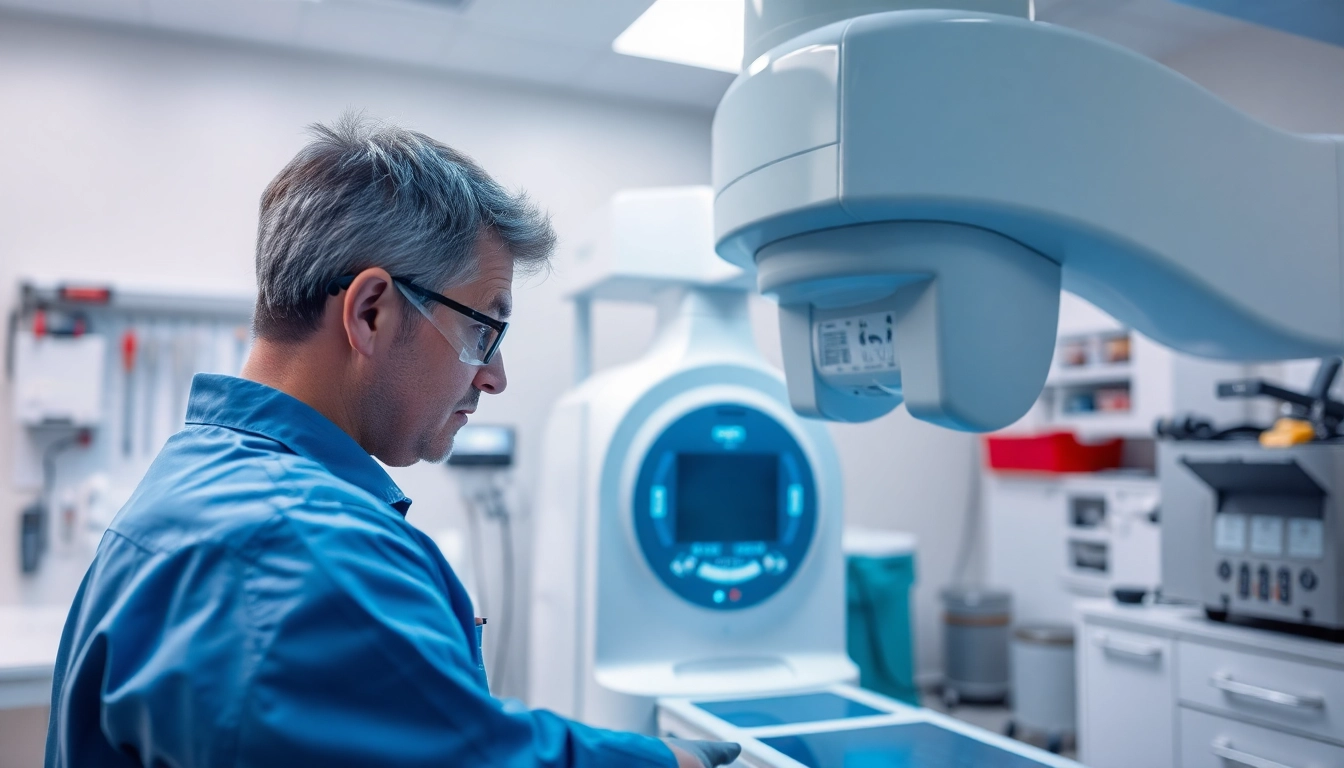Understanding the Importance of Annual Maintenance for X-Ray Machines
X-ray machines play a pivotal role in modern healthcare, aiding in diagnostics that save lives and streamline patient care. However, the reliability and efficiency of these machines depend significantly on regular and thorough maintenance. Annual maintenance for X-ray machines is essential for ensuring that diagnostic equipment functions optimally, adheres to safety protocols, and avoids costly repairs down the line.
Why Routine Maintenance Matters
Routine maintenance is critical for various reasons. Firstly, it ensures that the equipment operates as intended, providing accurate imaging results. Regular check-ups catch minor issues before they escalate into major malfunctions. It’s statistically shown that organizations investing in maintenance experience a significant reduction in equipment failures. According to a report by the National Electrical Manufacturers Association (NEMA), businesses that conduct routine maintenance can prevent up to 30% of equipment failures. Moreover, having a structured maintenance schedule can enhance the lifespan of the machines, ultimately leading to lower replacement costs.
Health and Safety Compliance
Healthcare facilities are subject to stringent health and safety standards enforced by bodies such as the Occupational Safety and Health Administration (OSHA) and the FDA. Regular maintenance ensures compliance with these regulations, protecting both patients and staff from potential hazards arising from equipment failures or radiation leaks. Failure to comply can result in hefty fines, and more importantly, it compromises patient safety.
Cost-Effectiveness Over Time
While it may seem like an unnecessary expense, annual maintenance for X-ray machines proves to be cost-effective in the long run. Preventative maintenance can identify and fix problems early, which minimizes expensive repairs and service interruptions. By prolonging the life of the equipment and ensuring consistent performance, healthcare providers can save significant amounts of money over time.
Common Issues Addressed During Annual Maintenance
Identifying Equipment Wear and Tear
X-ray machines are intricate devices with multiple components subject to wear and tear. Regular maintenance checks help pinpoint components that may be deteriorating, such as tubes, filters, and collimators. Technicians will inspect these parts for any signs of damage or malfunction and replace them as necessary, ensuring the machine operates at peak efficiency.
Addressing Software and Calibration Needs
In addition to hardware checks, software upkeep is essential for advanced imaging technologies. Annual maintenance includes updating software to the latest versions and calibrating the system for optimal performance. Proper calibration ensures that the images produced are accurate and reliable, maintaining the quality of care that patients receive.
Preventing Unexpected Downtime
Unexpected downtime can be detrimental to healthcare facilities, leading to delays in patient care and increased operational costs. Annual maintenance mitigates this risk by identifying potential issues before they result in machine failure. A well-maintained X-ray machine reduces the likelihood of unexpected breakdowns, ensuring that healthcare services can proceed smoothly and efficiently.
Best Practices for Annual Maintenance Procedures
Creating a Maintenance Schedule
Establishing a comprehensive maintenance schedule is one of the cornerstones of effective management for medical imaging equipment. This schedule should outline regular checks, including daily, weekly, monthly, and annual maintenance tasks. Setting specific dates for routine inspections and documenting completed work ensures that all necessary checks are performed consistently, fostering accountability and reliability.
Choosing Qualified Technicians
The expertise of technicians handling the maintenance work cannot be overstated. Hiring certified professionals who are well-versed with the specific models of X-ray machines in use is crucial. These experts are trained to handle potential issues and are familiar with the latest technological developments. Their insight can lead to more effective servicing and problem resolution, thus enhancing safety and efficiency.
Utilizing Checklists for Efficiency
Maintenance checklists streamline the inspection process. They ensure that every component is accounted for during inspections, reducing the chance of overlooking critical aspects. A standardized checklist can provide a clear outline for technicians, ensuring that all checks are thorough and consistent, thereby resulting in comprehensive maintenance records that can be invaluable for future reference.
Implementing Advanced Monitoring Technologies
The Role of Predictive Maintenance
Predictive maintenance leverages advanced analytics and monitoring tools to anticipate equipment failures before they occur. By analyzing data from various sensors and historical performance metrics, healthcare facilities can develop insights into when a machine might need servicing. This proactive approach minimizes downtime and optimizes the scheduling of maintenance activities, contributing to a more efficient operation.
Integrating IoT Solutions
The Internet of Things (IoT) is revolutionizing how X-ray machines are monitored and maintained. IoT devices can continually track the status of machines, sending real-time alerts regarding operational irregularities or performance fluctuations. These insights allow for quicker response times and can drive data-supported decisions regarding maintenance schedules.
Data Analysis for Proactive Care
Using data analysis allows healthcare organizations to derive meaningful patterns from their equipment performance metrics. This analysis can reveal trends that might not be visibly apparent during routine inspections. By examining this data, facilities can identify the optimal times for maintenance, thus balancing workload and ensuring equipment reliability without unnecessary expense.
Evaluating and Improving Maintenance Outcomes
Gathering Performance Metrics
To evaluate the effectiveness of maintenance strategies, it is essential to gather performance metrics continually. By measuring factors such as uptime, image quality, and patient throughput, organizations can gauge whether their maintenance efforts are yielding the desired results. Collecting this data over time facilitates informed decision-making regarding process improvements or needed adjustments.
Feedback Systems for Continuous Improvement
Implementing feedback systems can further enhance maintenance outcomes. Staff working directly with the X-ray machines can provide frontline insights regarding equipment performance. Gathering feedback regularly can highlight areas needing attention, promote accountability among maintenance teams, and lead to ongoing adjustments to maintenance procedures that improve overall efficiency.
Addressing User Training and Education
The effectiveness of maintenance practices is significantly influenced by how well staff are trained. Providing ongoing education regarding proper equipment use, safety measures, and troubleshooting can reduce operational issues caused by user error. Regular training sessions should be a part of the overarching maintenance strategy, thereby ensuring staff are informed about best practices and any updates in technology.



